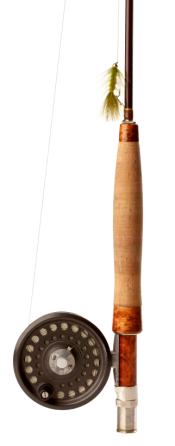Fly Fishing in Salt Water has grown in popularity over the past half century as many fisherman experience the thrill and excitement of the sport. Salt water Fly Fisherman prefer to use a small boat as they explore shallow fishing areas, and still others opt for the adventure of deep sea fly fishing. With ideal fishing spots especially near islands where numerous varieties of blue water fish hold, salt water fly fishing has given those who enjoy salt water fly fishing an unlimited number of places to fish.
Understanding the flow of the tides is essential for any salt water fly fisherman. Tides affect the water's temperature and its clarity two of the factors that have an effect on the movement of the fish in the area. If you are fly fishing near an inland bay or a lagoon, the tides will play a major role in choosing the best area f to fish. For example, if the body of water is tide-drained through a narrow creek, fish will be feeding on the smaller fish that have been swept through it. The best place to fish is down side of the mouth of the creek.
On both the Atlantic and Pacific coats the tide rises and falls twice within a twenty-four-hour period. In the Gulf of Mexico, there are some places where the tide rises only once a day. There are thousands of miles of coastline in the United States which offer an almost unlimited number of locations for fly fishing.
Most salt water fly fishing is done in relatively shallow waters, or very close to the shore. This is called inshore fishing, and includes fly fishing done from the shore or from a small boat in shallow waters. Many varieties of fish can be taken while inshore fishing including striped bass, channel bass, bluefish, bonefish, flounder, bonito, barracuda, rockfish, cobia, halibut, jack crevalle, jewfish, ladyfish, mackerel, pollack, pompano, shark, snapper, snook, rooster fish, tarpon, and weakfish.
Deep water fly fishing can be extremely exciting and challenging to a salt water fly fisherman. This type of fishing is done in water more than twelve feet deep from a boat that can range in size from a ten foot skiff to a 50 foot oceangoing vessel. Deep water fly fishing is quickly becoming one of the most popular ways to fish.
Deep water fish sought by fly fishermen are roughly divided into to categories, roamers and homebodies. Roamers are mostly pelagic and move great distances in a short time. Some of the varieties of roamers that can be caught while fly fishing include albacore, dolphin, marlin, wahoo, sailfish, yellowtail, and tuna. Homebodies sometimes appear in schools, but it is not unusual to find a solitary one. Homebodies include African pompano, Great barracuda, rockfish, grouper, amerjack, and snapper. These are only a few of the many vanities that are available to fly fishermen that fish the deep ocean waters.
Whether you decide to fish inshore or deep sea, salt water fly fishing will provide an exciting, challenging and memorable experience.
Fly Fishing in Salt Water
Posted by
The Lonely Fisherman
![]()
![]()
Labels: fly fishing in salt water, salt water fly fisherman, salt water fly fishing
Subscribe to:
Post Comments (Atom)



No comments:
Post a Comment